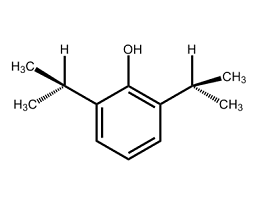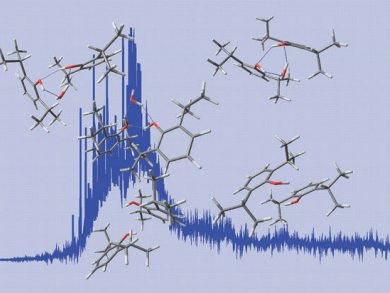Anesthetic and Protein Interactions
Spanish scientists at the University of the Basque Region and the University of La Rioja have combined mass-resolved electronic spectroscopy and ab initio calculations to model the interactions of anesthetics with proteins. Anesthetics are designed to work as pain relievers by affecting a specific protein in the brain, thereby suppressing pain signal transmittance. “However, very often there are also undesired interactions with other proteins, which result in secondary effects that sometimes may even lead to the death of the patient”, says Jose A. Fernández, lead author of a study published recently in ChemPhysChem. “To design new, more specific anesthetics, with reduced secondary effects, it is necessary to have a deep knowledge of how anesthetics interact with proteins.”
The computer modeling needed to gain insights into the working mechanism of these systems is rather difficult. Owing to their non-covalent nature, the interactions that contribute to the final shape of the anesthetic are very small compared to the total energy of the molecule. The methods applied by Fernández and co-workers on small- or medium-sized systems have allowed them to evaluate the magnitude and quality of different possible non-covalent interactions among a set of selected molecules. Their approach can even be used to describe very large systems with reasonable accuracy. The mass-resolved detection has yet another advantage: it discriminates between the numerous aggregates formed in the beam, isolating them in different mass channels. Fernández explains: “Several lasers are used to collect data on the structures of the aggregates. These results are then compared with the calculations performed on the system, allowing for the precise determination of the structure of the aggregates.”
Predicting Conformations of Anesthetics
In this study, Fernández and co-workers have focused on the homodimer of the widely used general anesthetic propofol (pictured) and its complex with one water molecule. “The calculations predict hundreds of possible conformations for the aggregates—each conformation indicates a different way in which the molecules can interact”, Fernández says. “However, the experiments demonstrate that only two [conformations] are stable for the dimer and three for the complex containing water.” Despite the small size and simplified nature of the system studied, the results obtained by this approach provide an accurate simulation of experimental observations, and are an important step towards understanding the many interactions that propofol experiences when injected into a living being.
- A Spectroscopic and Computational Study of Propofol Dimers and Their Hydrated Clusters,
Iker León, Judith Millán, Fernando Castaño, José A. Fernández,
ChemPhysChem 2012.
DOI: 10.1002/cphc.201200633




